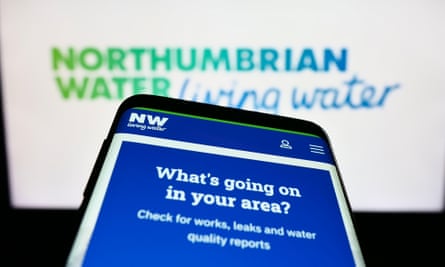A water company that tried to keep secret details of hundreds of thousands of tonnes of raw sewage discharges into the sea has been ordered by an appeal tribunal to release the data in the public interest.
Northumbrian Water has repeatedly refused to release details about the scale of raw sewage discharges into the North Sea from an outflow at its pumping station in Whitburn, after a campaigner asked under freedom of information and environmental information regulations.
Campaigners say the pollution has been going on for years, but the Environment Agency, Northumbrian Water and the government all dispute their findings.
In 2012 the European court of justice ruled the sewage discharges at Whitburn put the UK in breach of its legal obligations to treat wastewater and gave the government five years to remedy the situation.
Steve Lavelle, the vice-chair of the neighbourhood forum in Whitburn, south Tyneside, has been investigating the scale of raw sewage discharges in an attempt to show the pollution is continuing many years after the ECJ ruling.
Lavelle said: “We need this information to show this pollution is still going on. We want the data to feed into our neighbourhood plan so that we can provide the details about the capacity of sewage treatment in the area when any future development is proposed.
“At the moment they do not have the infrastructure in place to deal with the volume of sewage.”
The Environment Agency permit for the plant states raw sewage discharges must only take place during intense rainfall or snowmelt.
But data unearthed by Lavelle over many years has exposed what he says is sewage dumping outside periods of intense rainfall.
In 2019 when the north-east of England received slightly above average rainfall of 750mm of rain, more than 760,000 tonnes of untreated sewage was discharged from Whitburn Steel pumping station directly into the North Sea, Environment Agency data obtained by Lavelle shows.
In 2020, when rainfall was 610mm, within the annual average range, the long sea outfall discharged more than 460,000 tonnes of untreated sewage into the Northumbria Coast special protection area.
A year later when rainfall was 660mm, the water company discharged a record high of 821,088 tonnes into the sea.

Lavelle said these discharges contributed to the pollution in the North Sea at Marsden, where there is a beach designated as bathing water, and the pollution to the beaches and rock pools at Whitburn.
To retrieve 2022 data, he asked the water company via environmental information regulations and FoI to provide a detailed description of all of the sewage discharge records, the times of discharges and the volumes of sewage discharges.
The regulator Ofwat and the Environment Agency are investigating more than 2,000 treatment works across the water network for suspected illegal sewage dumping.
The investigations, which are likely to report this year, could impose significant fines or lead to the prosecution of some companies.
Citing the investigations as a reason, Northumbrian Water refused to release the 2022 data to Lavelle, saying to do so “would adversely affect the course of justice, the ability of a person to receive a fair trial or the ability of a public authority to conduct an inquiry of a criminal or disciplinary nature”.
When Lavelle asked for an internal review, Northumbrian Water argued that to release the sewage data could cause adverse public opinion to influence the regulators as they carried out their investigation.
The Information Commissioner’s Office, asked to examine Lavelle’s request, supported the water company and said it was in the public interest for the company to keep the information secret.
But after an appeal to the first tier tribunal, the panel found in favour of Lavelle and told the water company it was not satisfied that releasing the information would affect the course of justice.
The tribunal found it was in the public interest to release the information, and the water company had not adequately considered the need for transparency in its refusal to provide the information.
“It has been like pulling teeth,” said Lavelle. “They are more intent on closing down my requests for information than being transparent and providing the information which is in the public interest.”
Northumbrian Water said in a statement: “We are committed to protecting and enhancing coasts, rivers and watercourses in all areas of our operation and have proactively published a number of industry-leading pledges to generate further improvements.
“We have a strong track record when it comes to the environment and have retained the excellent or good rating from the Environment Agency in each of the last three years. We note the tribunal court’s decision regarding the Whitburn pumping station and are considering our next steps.”
The ruling came as seven water companies published near-real-time maps of their sewage discharges from combined sewer overflows, which was required under the Enviornment Act. Those companies are Dwr Cymru (Welsh Water), Yorkshire Water, Severn Trent, Northumbrian Water, Anglian Water, Wessex Water and United Utilities.
